Classic modern home design with open floor plan: Imagine a space where clean lines meet effortless flow, where natural light dances across polished concrete floors and sleek, minimalist furniture. This isn’t just a home; it’s a lifestyle statement. We’re diving deep into the captivating world of classic modern architecture, exploring how open floor plans enhance its inherent elegance and functionality.
From material selection to furniture placement, we’ll unpack the essential elements that define this sophisticated and increasingly popular design aesthetic.
This guide will cover everything from understanding the nuances of classic modern style (and how it differs from mid-century modern and contemporary) to mastering the art of open-plan living. We’ll delve into practical considerations like managing noise and maintaining privacy in an open space, and provide design inspiration to help you create your dream classic modern home.
Defining “Classic Modern” in Home Design
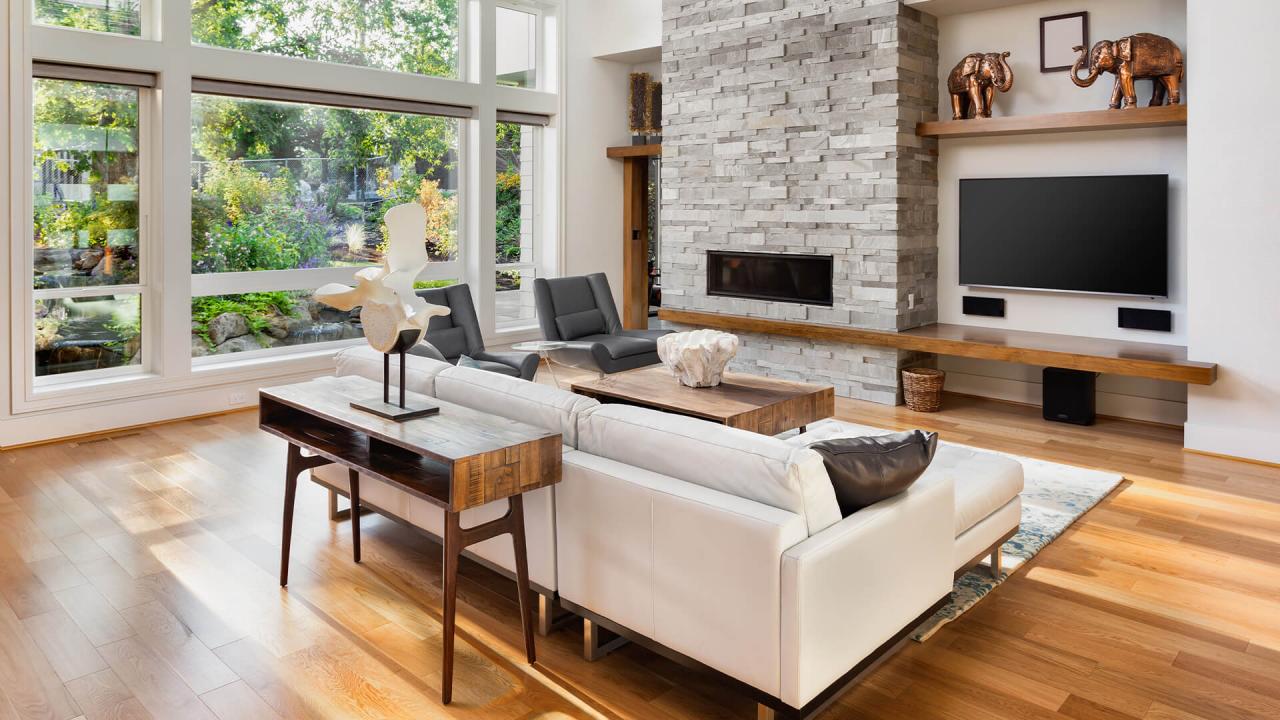
Classic modern home design represents a timeless elegance, blending the clean lines and functionality of modern architecture with enduring design principles that resist fleeting trends. It’s a style that prioritizes sophistication and understated luxury, creating spaces that feel both contemporary and eternally stylish.Classic modern differs significantly from its related styles, mid-century modern and contemporary. While all three share a preference for simplicity, their expressions vary considerably.
Classic Modern Design Characteristics
Classic modern homes are characterized by their balanced proportions, symmetrical facades, and the use of high-quality, natural materials. Think sleek, streamlined forms, often incorporating large windows to maximize natural light and create a seamless transition between indoor and outdoor living spaces. The emphasis is on creating a sense of calm and order, avoiding overly ornate details or fussy embellishments.
Instead, the focus is on the inherent beauty of the materials and the skillful arrangement of architectural elements. This style often incorporates elements of traditional architecture, such as columns or pilasters, but reinterprets them in a simplified, modern context.
Distinguishing Classic Modern from Mid-Century Modern and Contemporary Styles
Mid-century modern, popularized in the 1950s and 60s, emphasizes functionality and geometric shapes, often featuring bold colors and playful use of materials like teak and fiberglass. Contemporary design, on the other hand, is constantly evolving, embracing the latest trends and technologies. It’s characterized by a greater experimentation with materials, forms, and a more eclectic approach to style. Classic modern acts as a bridge, retaining the clean lines and functionality of modern design while incorporating elements of timelessness and sophistication that set it apart from both mid-century and contemporary styles.
Classic Modern Design Elements
The material palette in classic modern design typically features natural materials like stone, wood, and marble. These are often used in their natural state, showcasing their inherent textures and colors. Color palettes are typically neutral and sophisticated, favoring shades of white, gray, beige, and black, often accented with subtle pops of color in furnishings and artwork. Architectural features commonly include high ceilings, large windows, and open floor plans that promote a sense of spaciousness and light.
Built-in shelving and cabinetry are frequently incorporated to maximize storage and maintain a clean, uncluttered aesthetic. Simple, elegant moldings and trim are often used to add subtle architectural detail without overwhelming the space.
Comparison of Design Elements
| Feature | Classic Modern | Mid-Century Modern | Contemporary |
|---|---|---|---|
| Color Palette | Neutral tones (white, gray, beige, black) with subtle accents | Bold colors, often jewel tones or primary colors | Wide range, often incorporating bold and contrasting colors |
| Materials | Natural materials (stone, wood, marble) | Teak, fiberglass, plywood, chrome | Variety of materials, including recycled and sustainable options |
| Architectural Features | Symmetrical facades, high ceilings, large windows, clean lines | Geometric shapes, open floor plans, low-slung roofs | Varied architectural styles, often incorporating innovative and unconventional designs |
| Overall Style | Timeless elegance, understated luxury | Functional and playful, optimistic and bold | Eclectic, experimental, often incorporating cutting-edge technology |
Open Floor Plans
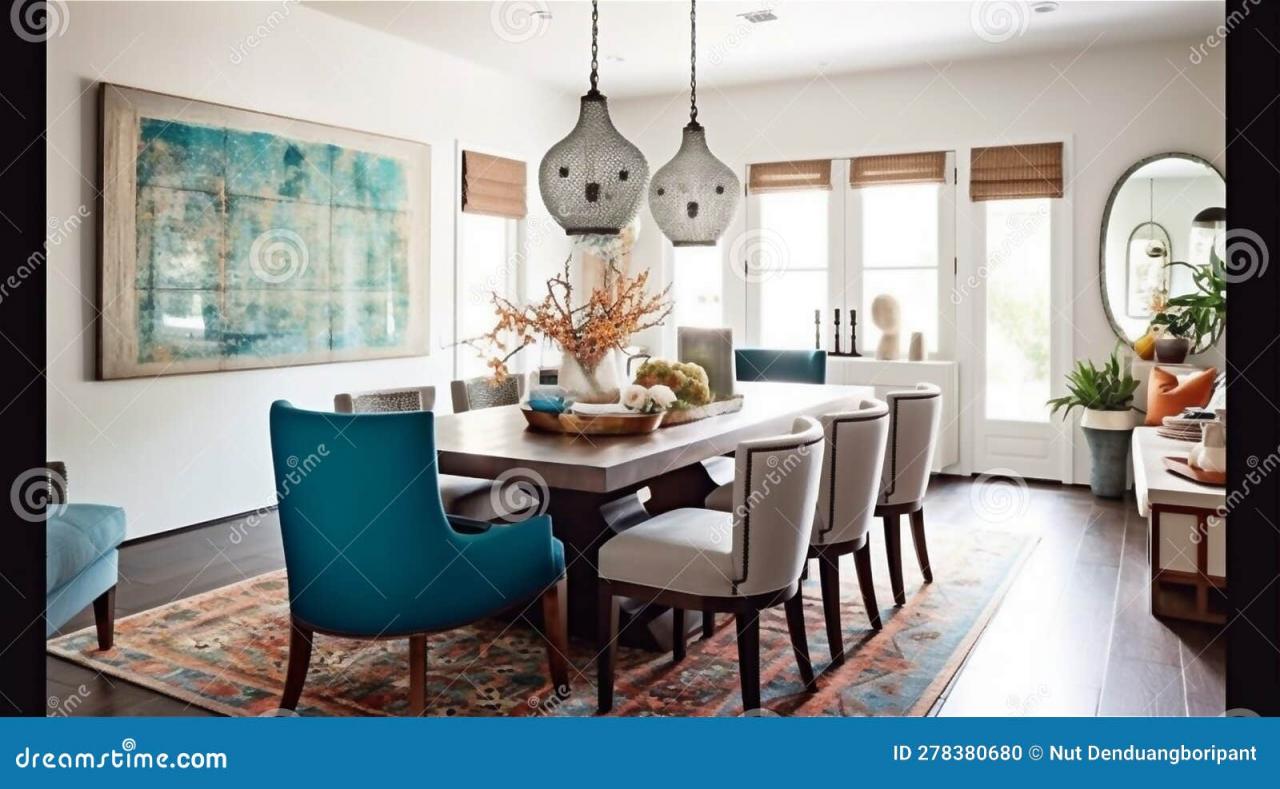
Open floor plans are a hallmark of classic modern home design, offering a seamless flow and connection between living spaces. This design choice prioritizes spaciousness and natural light penetration, creating a sense of openness and airy elegance that perfectly complements the clean lines and minimalist aesthetic of classic modern architecture. However, the advantages of this popular design choice are not without their potential drawbacks.
Let’s explore both sides of the coin.
Advantages of Open Floor Plans in Classic Modern Homes
The appeal of open floor plans lies primarily in their ability to maximize space and enhance the overall ambiance of a home. The absence of walls between key living areas—like the kitchen, dining room, and living room—creates a sense of expansiveness, making even smaller homes feel significantly larger. Natural light flows freely throughout the interconnected spaces, brightening the entire area and reducing the need for extensive artificial lighting.
This seamless flow also promotes a more social and interactive atmosphere, perfect for modern family life and entertaining guests. The open layout allows for a more flexible and adaptable living space, easily accommodating changing lifestyles and furniture arrangements.
Drawbacks of Open Floor Plans
While offering numerous benefits, open floor plans also present some challenges. One significant concern is the lack of sound privacy. Noises from the kitchen, living room, or home office can easily carry throughout the entire open space, potentially disrupting quiet activities or conversations in other areas. Similarly, a lack of visual privacy can be a drawback for some homeowners.
The open layout offers little opportunity for seclusion or creating intimate spaces within the home. Furthermore, maintaining a consistent temperature throughout the large, open area can be more energy-intensive compared to homes with more defined rooms.
Mitigating Drawbacks While Retaining Advantages
Several design strategies can effectively address the potential downsides of open floor plans while preserving their advantages. Strategic use of rugs, furniture placement, and room dividers can create distinct zones within the open space, subtly defining different areas without erecting physical walls. Consider incorporating built-in shelving or a half-wall to visually separate the kitchen from the dining area while still maintaining an open feel.
Acoustic panels or sound-absorbing materials can be strategically placed to minimize noise transfer between areas. Similarly, strategically placed plants or tall bookcases can add visual privacy without completely blocking the flow of light and space. Using different lighting schemes in different zones can further enhance the sense of separation.
Examples of Successful Open Floor Plan Designs
- A classic modern home featuring a kitchen island as a natural divider between the kitchen and living area. The island provides additional counter space and seating, acting as a focal point while maintaining the open flow.
- An open floor plan with a raised hearth and fireplace as a central feature, visually anchoring the living space while creating a warm and inviting atmosphere. The fireplace’s placement helps to naturally zone the space, separating the living area from the dining area.
- A home incorporating a glass partition or sliding doors to separate the living area from a home office or guest room. This allows for both visual and acoustic separation when needed while still letting light flow through the glass.
- A modern home using different flooring materials to define different zones within the open plan, such as hardwood in the living area and tile in the kitchen, creating subtle visual distinctions.
Material Selection and Finishes
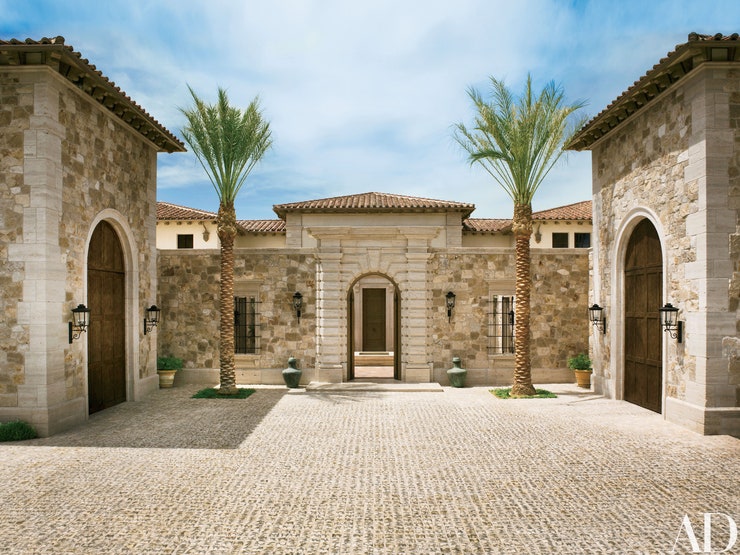
Choosing the right materials and finishes is crucial in achieving the signature look of a classic modern home. The interplay of textures and colors creates a sophisticated and timeless aesthetic, reflecting the design philosophy’s emphasis on clean lines and functionality. Careful consideration of durability and maintenance is also key, ensuring the home remains beautiful and practical for years to come.The selection of materials significantly impacts the overall feel and atmosphere of a classic modern home.
Natural materials, often paired with sleek metallic accents, are preferred for their ability to create a warm, inviting space while maintaining a sense of understated elegance. The right finishes can amplify the inherent beauty of these materials or add a layer of visual interest.
Common Materials in Classic Modern Homes
Classic modern design frequently utilizes a palette of natural and industrial materials. Wood, often in lighter shades like oak or maple, provides warmth and texture. Stone, such as marble or limestone, adds a touch of luxury and sophistication, especially in countertops and flooring. Metal, particularly stainless steel or brushed nickel, introduces a sleek, contemporary element, often seen in fixtures and accents.
Glass, with its inherent transparency and ability to maximize natural light, is frequently used in partitions, doors, and windows, creating a sense of spaciousness.
Material Choices and Aesthetic Impact
The careful selection and combination of these materials contribute directly to the classic modern aesthetic. For example, the clean lines of stainless steel kitchen appliances contrast beautifully with the warmth of a wooden island, creating a balanced and visually appealing space. Similarly, the smooth surface of marble countertops complements the textural richness of a wooden floor, demonstrating a sophisticated interplay of materials.
The use of large expanses of glass further enhances the open feel of the floor plan, blurring the lines between indoor and outdoor spaces.
Floor, Wall, and Countertop Finishes
Floor finishes in classic modern homes often feature wide-plank hardwood flooring in natural or lightly stained finishes, offering a sense of warmth and sophistication. Polished concrete is another popular choice, providing a sleek, industrial-chic aesthetic. For walls, smooth plaster or painted drywall in neutral colors creates a clean, uncluttered backdrop, allowing the architectural details and furniture to take center stage.
Textured wallpaper in subtle patterns can also be incorporated as an accent wall to add visual interest. Countertops often showcase sleek surfaces like quartz, marble, or concrete, providing durability and a sense of modern luxury. These materials are chosen for their ease of maintenance and resistance to wear and tear.
Material Palette for a Classic Modern Open Floor Plan Home
This design utilizes a palette of natural and industrial materials to create a balanced and sophisticated aesthetic.
| Material | Use | Location |
|---|---|---|
| Light Oak Hardwood | Flooring | Throughout the main living areas |
| White Quartz | Countertops | Kitchen and Bathrooms |
| Matte White Painted Drywall | Walls | Throughout the home |
| Brushed Nickel | Hardware and Fixtures | Kitchen, Bathrooms, and throughout the home |
| Limestone Tile | Backsplash | Kitchen |
| Large Format Glass Panels | Interior Partition | Between the kitchen and dining area (optional) |
Lighting and Interior Design
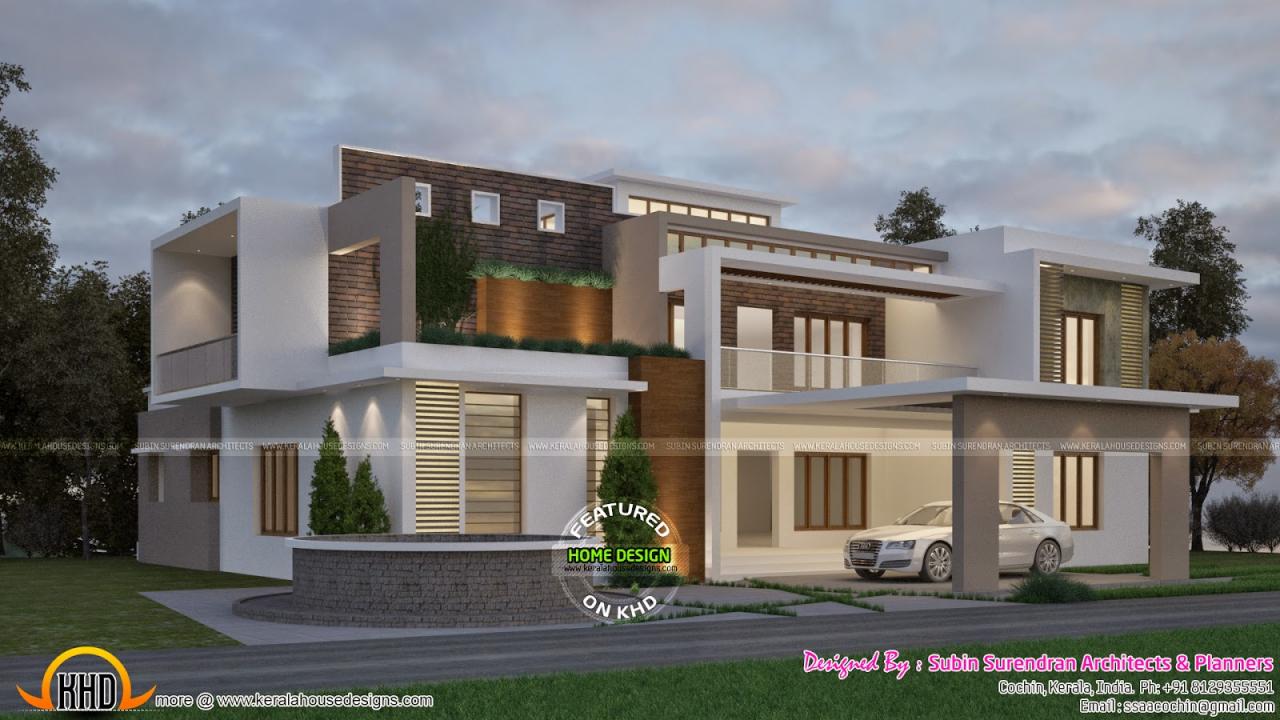
In classic modern homes, lighting isn’t merely functional; it’s a crucial element shaping the ambiance and highlighting the architectural features of the open floor plan. The right lighting scheme can amplify the sense of spaciousness, define different zones within the unified space, and enhance the overall aesthetic appeal. A well-thought-out lighting plan is essential to achieve the desired atmosphere, whether it’s the relaxed warmth of a family gathering or the sophisticated elegance of a dinner party.Lighting plays a pivotal role in accentuating the clean lines and minimalist aesthetic of classic modern design.
It should complement the carefully selected materials and finishes, creating a harmonious and visually stunning environment. The interplay of natural and artificial light sources is particularly important in achieving this balance.
Lighting Styles for Classic Modern Homes
Several lighting styles seamlessly integrate into the classic modern aesthetic. Recessed lighting, for instance, provides even, ambient illumination, ideal for general room lighting. Its discreet nature maintains the clean lines of the architecture without visual clutter. Pendant lights, especially those with minimalist designs and geometric shapes, add a touch of sophistication and can be strategically placed above kitchen islands or dining tables to create focal points.
Track lighting offers flexibility, allowing for adjustable illumination to highlight artwork or architectural details. This adaptability makes it perfect for open floor plans where lighting needs may vary across different zones.
Lighting Plan for a Classic Modern Open Floor Plan, Classic modern home design with open floor plan
Consider a living area, dining area, and kitchen arrangement. Recessed lighting would provide a base level of illumination throughout the open space. Above the dining table, a trio of sleek pendant lights in brushed nickel would create a visually striking focal point, offering focused task lighting. In the kitchen, under-cabinet lighting would illuminate work surfaces, while track lighting above the island could be adjusted to highlight the countertop and provide task lighting for food preparation.
Accent lighting, perhaps in the form of small LED strip lights, could be integrated into shelving or behind furniture to add depth and visual interest. The intensity of the lighting should be adjustable, allowing for flexibility depending on the time of day and the mood. Dimmers are essential for controlling the brightness and creating the desired ambiance.
Impact of Natural Light
Natural light is paramount in a classic modern home. Large windows and glass doors are characteristic features that maximize natural light penetration. This abundant light interacts beautifully with the materials typically used in classic modern design. For instance, natural light enhances the warmth of natural wood flooring, bringing out its grain and texture. Similarly, the light reflects off polished concrete floors, creating a sense of airy spaciousness.
In the case of marble countertops or backsplashes, natural light highlights their veining and adds a touch of luxurious shimmer. The interplay of light and shadow created by the sun’s movement throughout the day adds dynamism to the space, preventing it from feeling static. The orientation of the house, with windows strategically placed to capture optimal sunlight, directly impacts the amount and quality of natural light throughout the day.
This thoughtful consideration of natural light integration is key to achieving the desired brightness and visual appeal of the classic modern style.
Furniture and Decor: Classic Modern Home Design With Open Floor Plan

Furnishing and decorating a classic modern home with an open floor plan requires a careful balance of form and function. The goal is to create a space that feels both sophisticated and inviting, utilizing pieces that enhance the architectural features while maintaining a sense of openness and flow. The right furniture and decor choices can elevate the overall aesthetic, transforming a house into a stylish and comfortable home.
Furniture Styles that Complement Classic Modern Design
Classic modern design thrives on clean lines, simple forms, and high-quality materials. Furniture pieces should reflect these principles, avoiding overly ornate or fussy details. Think sleek sofas with tailored cushions, mid-century modern armchairs with tapered legs, and minimalist coffee tables made of wood, glass, or metal. The overall effect should be one of understated elegance and refined simplicity.
Avoid overly bulky or excessively decorative pieces. Instead, opt for furniture that is both functional and visually appealing, contributing to the overall sense of calm and order.
The Role of Color and Texture in a Classic Modern Interior
Color and texture play a vital role in creating the desired atmosphere. A classic modern palette often features neutral base tones such as white, gray, beige, or black, which serve as a backdrop for pops of color in artwork, textiles, or accessories. Textures are crucial in adding depth and visual interest without compromising the clean lines of the design.
Think natural materials like linen, wool, and leather for upholstery and rugs, juxtaposed with the smooth surfaces of glass and metal. The interplay of these textures creates a dynamic yet harmonious space. For example, a plush wool rug might contrast beautifully with a sleek glass coffee table and a leather sofa.
Furniture Layout for an Open Floor Plan Classic Modern Living Space
Creating a functional and aesthetically pleasing furniture layout in an open-plan space is key. The following table suggests a possible arrangement for a living area, keeping in mind the need for conversation areas and traffic flow. Dimensions are approximate and can be adjusted based on the specific space.
| Furniture Item | Dimensions (approx.) | Placement | Notes |
|---|---|---|---|
| Sectional Sofa | 10ft x 4ft | Against longest wall | Provides ample seating and defines a conversation area. |
| Coffee Table | 4ft x 3ft | In front of sofa | Choose a style that complements the sofa and provides a surface for drinks and books. |
| Two Armchairs | Each 3ft x 3ft | Flanking fireplace (or opposite sofa) | Creates additional seating and a more intimate conversation area. |
| Rug | 12ft x 9ft | Under sofa and armchairs | Anchors the seating area and adds warmth and texture. |
Classic Modern Decor Elements
Careful selection of decor items is essential to complete the classic modern look. These elements should enhance the overall aesthetic without overwhelming the space.
- Artwork: Abstract paintings, minimalist photography, or graphic prints in muted tones. Consider large-scale pieces to make a statement.
- Accessories: Sculptural objects, ceramic vases, metallic trays, and decorative bowls. Keep the number of accessories limited to avoid clutter.
- Textiles: High-quality throws and cushions in natural fibers like linen or wool, adding texture and pops of color. Consider a patterned rug to anchor the space.
- Lighting: Statement lighting fixtures, such as a sculptural pendant lamp or a series of sleek track lights, are essential elements.
- Plants: Greenery adds life and freshness to the space. Choose simple potted plants or a few strategically placed cut flowers.
Kitchen and Bathroom Design within the Open Plan
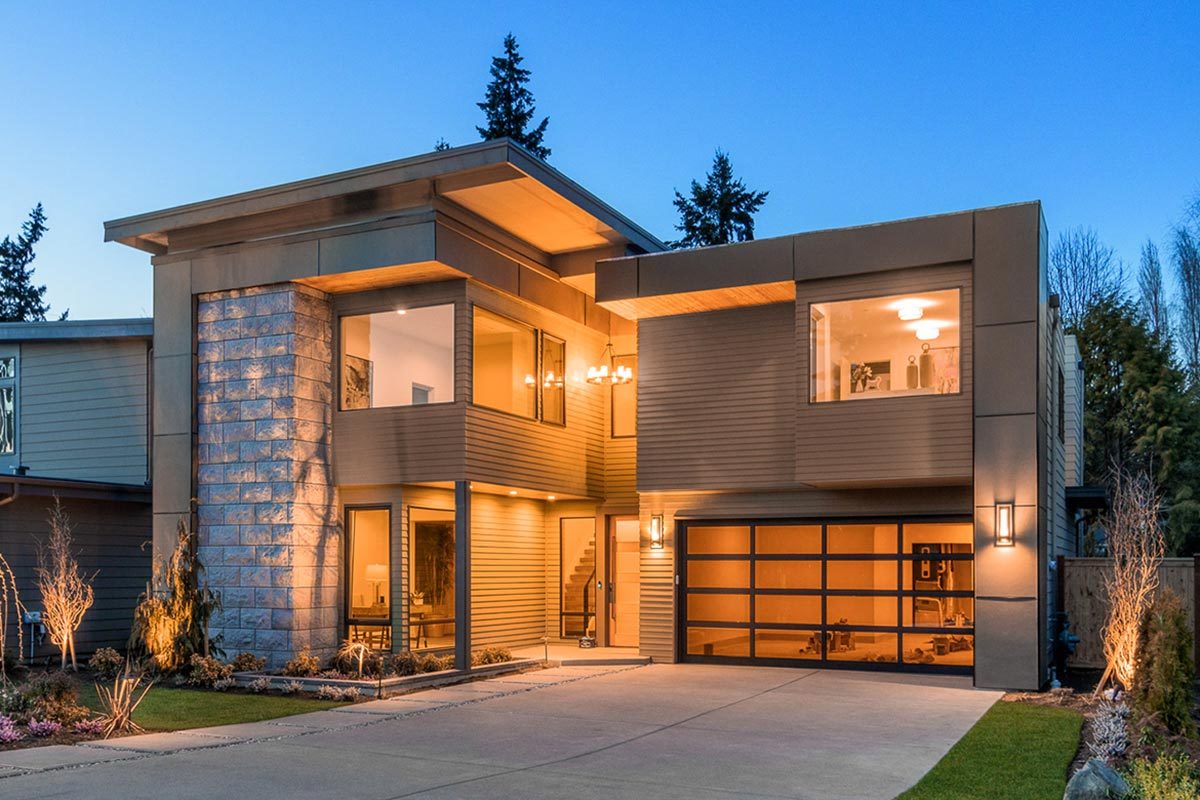
Integrating a kitchen and bathroom seamlessly into a classic modern open floor plan requires careful consideration of both functionality and aesthetics. The goal is to create spaces that feel connected yet distinct, maintaining a sense of flow while preserving privacy. This involves strategic material choices, thoughtful layouts, and clever design tricks.
Classic Modern Kitchen Layout in an Open Plan
A classic modern kitchen within an open plan often features a linear or island layout. A linear design maximizes space by aligning cabinetry and appliances along a single wall, leaving the rest of the area open to the living space. An island layout, on the other hand, creates a central focal point, offering additional counter space, seating, and storage.
Regardless of the layout, clean lines, minimalist aesthetics, and a focus on high-quality materials are paramount. Imagine a sleek, white-lacquered kitchen with a waterfall edge island crafted from a rich, dark marble, contrasted by brushed brass hardware. The appliances are integrated seamlessly into the cabinetry, maintaining the clean lines of the design.
Material and Appliance Selection for a Classic Modern Kitchen
Material selection is crucial in achieving the classic modern look. Think high-quality natural materials like marble, quartz, or wood for countertops and backsplashes. Cabinetry should be sleek and simple, potentially featuring a matte or high-gloss finish in neutral colors like white, gray, or black. Appliances should be integrated and high-end, featuring stainless steel or panel-ready designs to maintain a seamless look.
For example, a built-in refrigerator with a panel that matches the cabinetry provides a cohesive look.
Classic Modern Bathroom Design within an Open Plan
Designing a classic modern bathroom within an open plan demands a balance between openness and privacy. This can be achieved through strategic placement, using materials that create a sense of separation, and incorporating features like pocket doors or frosted glass partitions. A freestanding soaking tub, minimalist vanity, and large format tiles can enhance the spa-like atmosphere of the bathroom, while maintaining a visual connection to the surrounding open space.
A color palette of calming neutrals with pops of natural materials like wood or stone can add warmth and sophistication.
Maintaining Visual Separation and Privacy in Shared Spaces
Maintaining privacy in an open-plan kitchen and bathroom requires clever design solutions. For the kitchen, an island can act as a visual barrier, separating it from the living area while still maintaining a sense of openness. Similarly, a strategically placed rug or changes in flooring material can subtly define the kitchen area. In the bathroom, frosted glass partitions or pocket doors can provide privacy without completely closing off the space.
Strategic placement of the bathroom itself, perhaps tucked away behind a hallway or cleverly hidden behind a partial wall, can also create a sense of separation. Consider incorporating a statement piece of art or a decorative screen to further enhance visual separation.